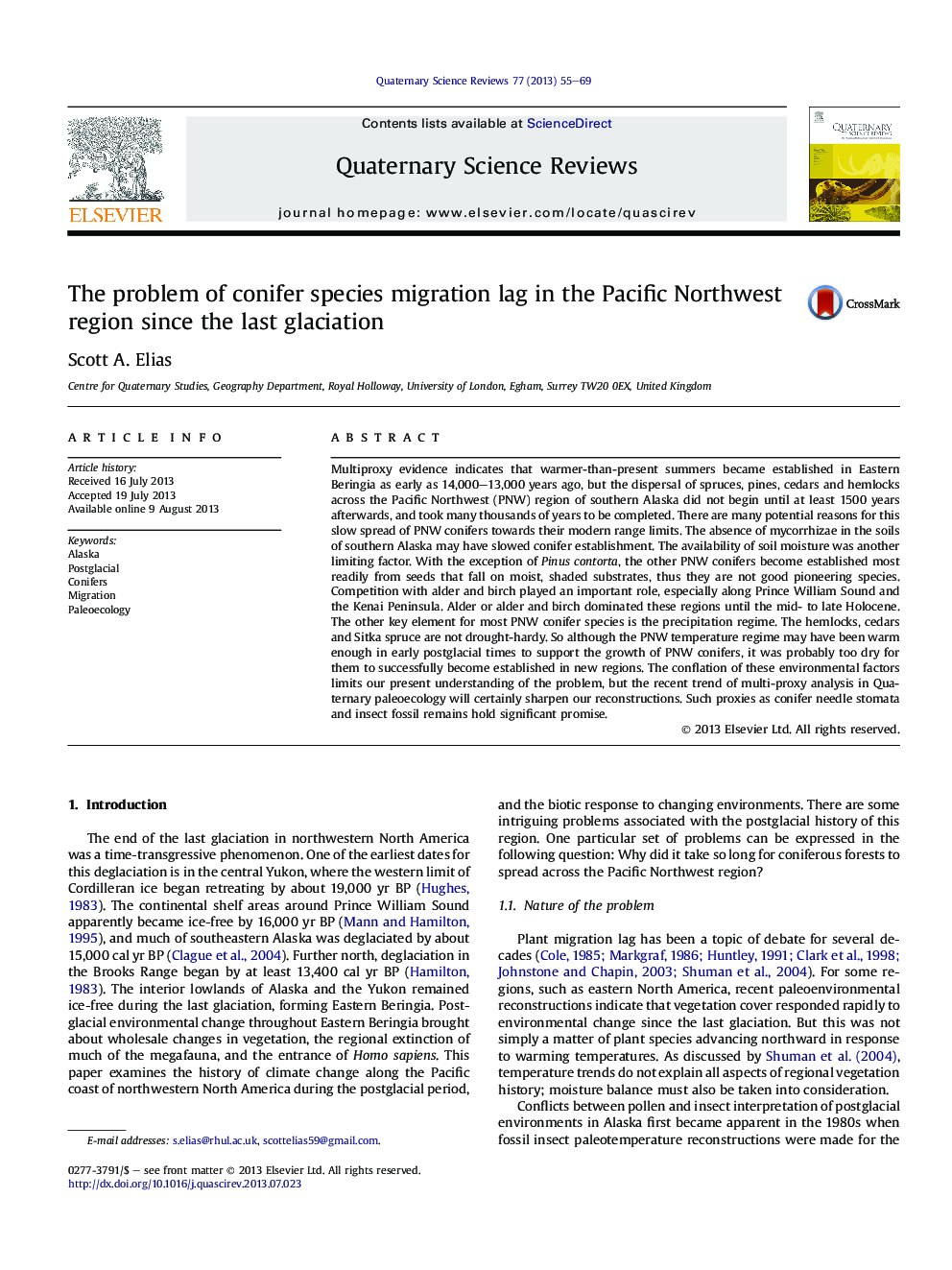| کد مقاله | کد نشریه | سال انتشار | مقاله انگلیسی | نسخه تمام متن |
|---|---|---|---|---|
| 6446545 | 1640857 | 2013 | 15 صفحه PDF | دانلود رایگان |
عنوان انگلیسی مقاله ISI
The problem of conifer species migration lag in the Pacific Northwest region since the last glaciation
دانلود مقاله + سفارش ترجمه
دانلود مقاله ISI انگلیسی
رایگان برای ایرانیان
کلمات کلیدی
موضوعات مرتبط
مهندسی و علوم پایه
علوم زمین و سیارات
زمین شناسی
پیش نمایش صفحه اول مقاله

چکیده انگلیسی
Multiproxy evidence indicates that warmer-than-present summers became established in Eastern Beringia as early as 14,000-13,000 years ago, but the dispersal of spruces, pines, cedars and hemlocks across the Pacific Northwest (PNW) region of southern Alaska did not begin until at least 1500 years afterwards, and took many thousands of years to be completed. There are many potential reasons for this slow spread of PNW conifers towards their modern range limits. The absence of mycorrhizae in the soils of southern Alaska may have slowed conifer establishment. The availability of soil moisture was another limiting factor. With the exception of Pinus contorta, the other PNW conifers become established most readily from seeds that fall on moist, shaded substrates, thus they are not good pioneering species. Competition with alder and birch played an important role, especially along Prince William Sound and the Kenai Peninsula. Alder or alder and birch dominated these regions until the mid- to late Holocene. The other key element for most PNW conifer species is the precipitation regime. The hemlocks, cedars and Sitka spruce are not drought-hardy. So although the PNW temperature regime may have been warm enough in early postglacial times to support the growth of PNW conifers, it was probably too dry for them to successfully become established in new regions. The conflation of these environmental factors limits our present understanding of the problem, but the recent trend of multi-proxy analysis in Quaternary paleoecology will certainly sharpen our reconstructions. Such proxies as conifer needle stomata and insect fossil remains hold significant promise.
ناشر
Database: Elsevier - ScienceDirect (ساینس دایرکت)
Journal: Quaternary Science Reviews - Volume 77, 1 October 2013, Pages 55-69
Journal: Quaternary Science Reviews - Volume 77, 1 October 2013, Pages 55-69
نویسندگان
Scott A. Elias,